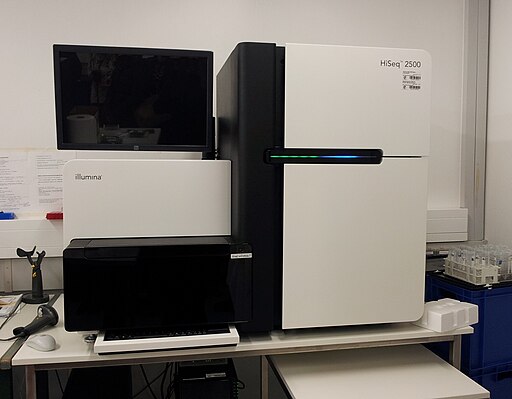Next-generation sequencing (NGS) has revolutionized various fields of research, including genomics, transcriptomics, and immunology. In the context of nanobody discovery, NGS offers a powerful and efficient approach for identifying and extracting variable domain heavy-chain (VHH) regions from camelid B-cells, bypassing the need for traditional techniques such as phage display. This article will explore the use of NGS for the identification of antibodies of interest from camelid B-cells and the subsequent extraction of the VHH region for nanobody expression.

Konrad Förstner, CC0, via Wikimedia Commons
Immunization and Isolation of B-cells
The process begins with the immunization of a camelid, such as a llama or alpaca, with the target antigen of interest. After a few weeks, peripheral blood lymphocytes (PBLs) or lymph node cells are collected from the immunized animal. These cells contain the B-cells responsible for producing heavy-chain-only antibodies (HCAbs) specific to the target antigen.
RNA Extraction and cDNA Synthesis
Total RNA is extracted from the isolated B-cells using standard RNA isolation techniques. The RNA serves as a template for reverse transcription, generating complementary DNA (cDNA) that represents the entire repertoire of expressed antibody genes, including the VHH domains of HCAbs.
Library Preparation and Next-Generation Sequencing
To prepare the cDNA library for NGS, the VHH-encoding sequences are amplified via polymerase chain reaction (PCR) using specifically designed primers. These primers recognize conserved regions within the heavy-chain-only antibody genes, ensuring selective amplification of the VHH domains.
The PCR-amplified VHH fragments are then subjected to NGS library preparation, which involves the addition of platform-specific adapters and unique molecular identifiers (UMIs) to the VHH amplicons. The prepared library is sequenced using an NGS platform, such as Illumina, PacBio, or Oxford Nanopore, generating millions of reads representing individual VHH sequences.
Bioinformatics Analysis and VHH Selection
The raw NGS data is processed and analyzed using custom bioinformatics pipelines to identify high-quality, target-specific VHH sequences. The analysis involves several steps, including read quality control, assembly of paired-end reads, removal of PCR duplicates, and annotation of VHH sequences.
The resulting dataset is then subjected to further filtering and selection based on various criteria, such as sequence diversity, CDR3 length, and predicted binding affinity for the target antigen. This process yields a set of candidate nanobodies with high potential for therapeutic applications.
Cloning, Expression, and Characterization of Nanobodies
The selected VHH sequences are cloned into suitable expression vectors, typically bacterial or yeast-based systems, to produce recombinant nanobodies. These nanobodies can be purified using standard protein purification techniques and subsequently characterized for their binding properties, specificity, and functional activities.
Candidate nanobodies demonstrating desirable characteristics can be further optimized through protein engineering techniques, such as directed evolution or rational design, to enhance their affinity, stability, or other properties critical for therapeutic applications.
Next-generation sequencing has emerged as a powerful tool for the rapid identification and extraction of nanobodies from camelid B-cells. By providing a high-throughput and unbiased approach to nanobody discovery, NGS facilitates the development of novel therapeutic agents across various disease areas. As NGS technologies continue to advance and become more accessible, their application in nanobody research is expected to expand, driving innovation and progress in the field of targeted therapeutics.